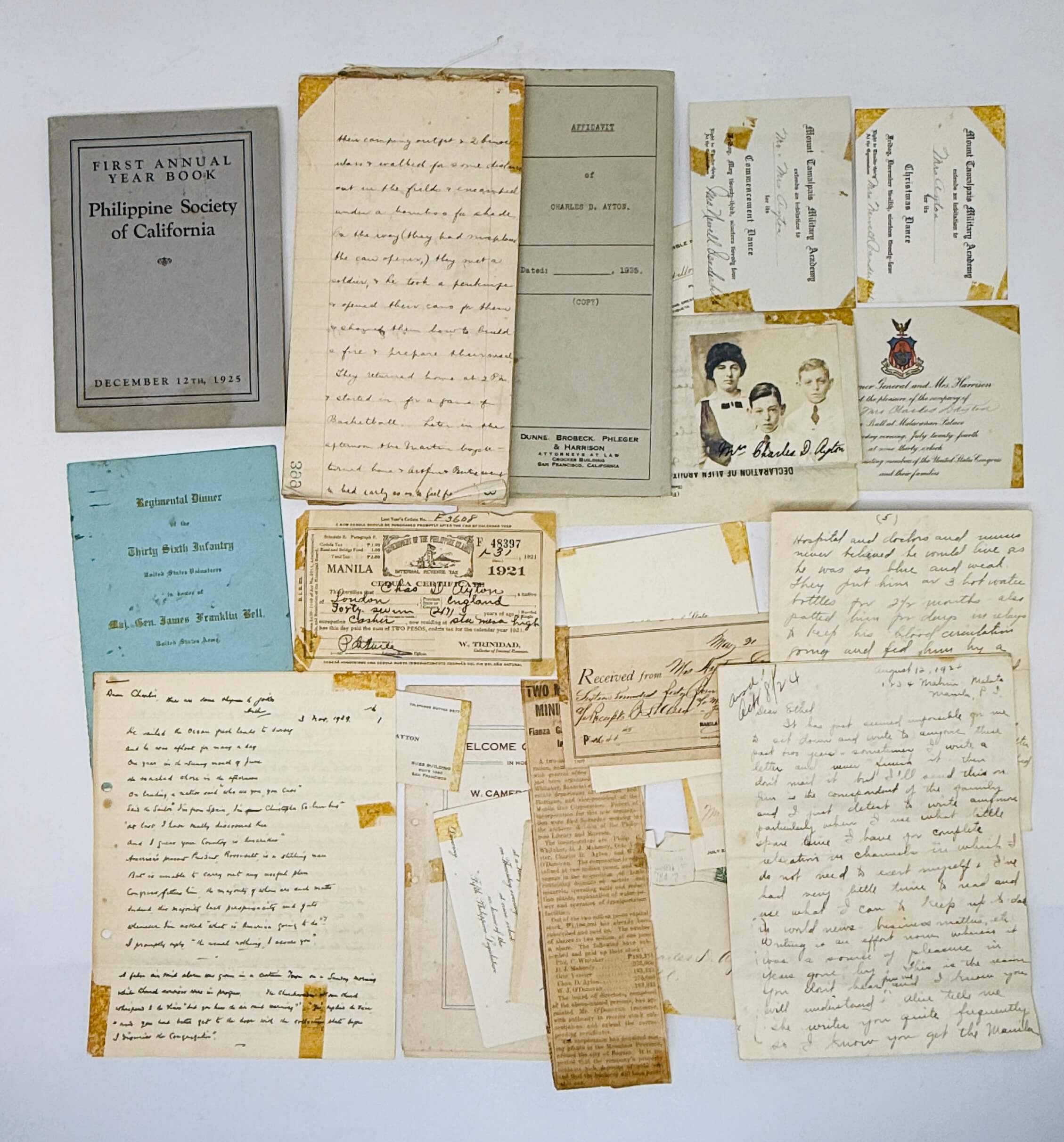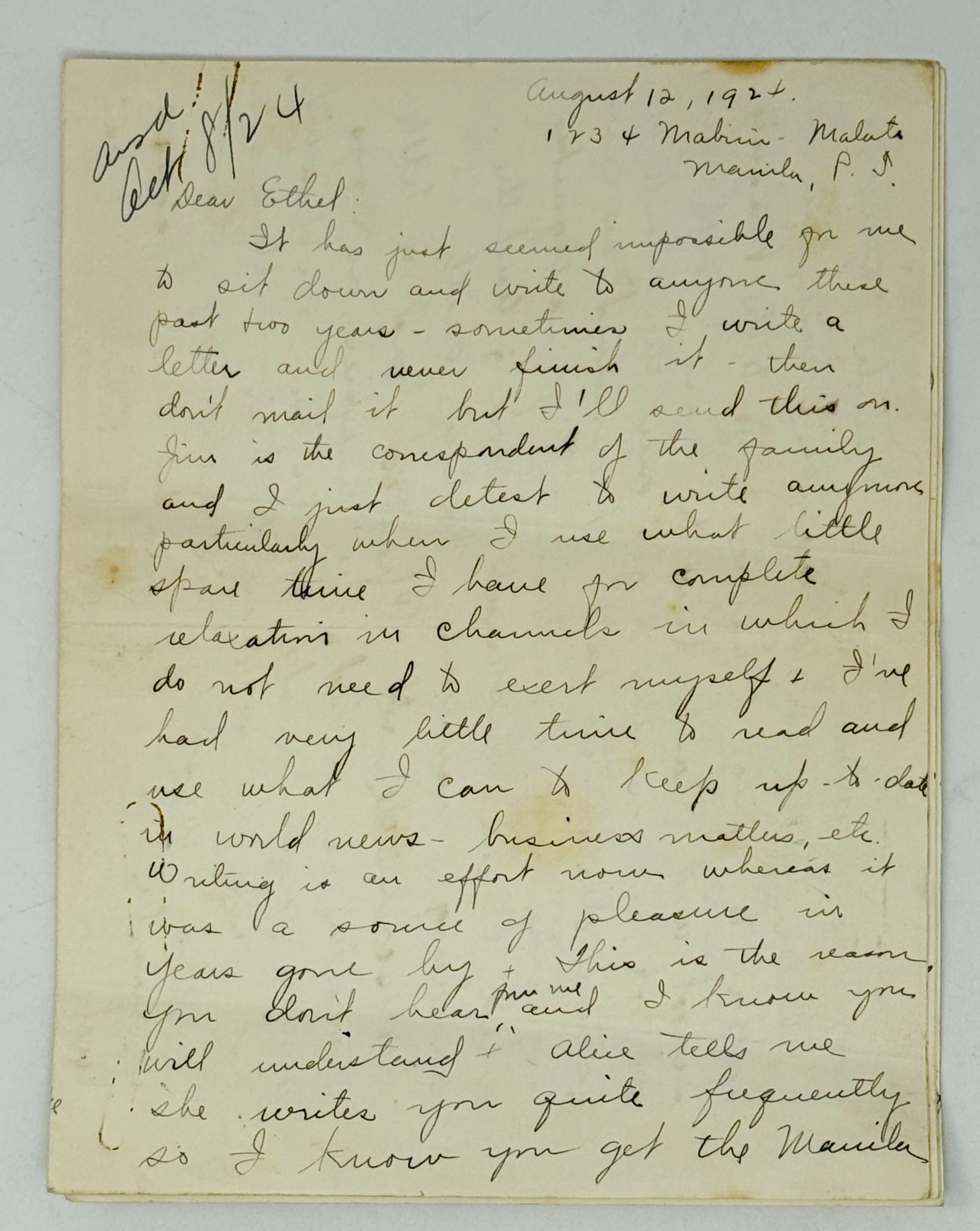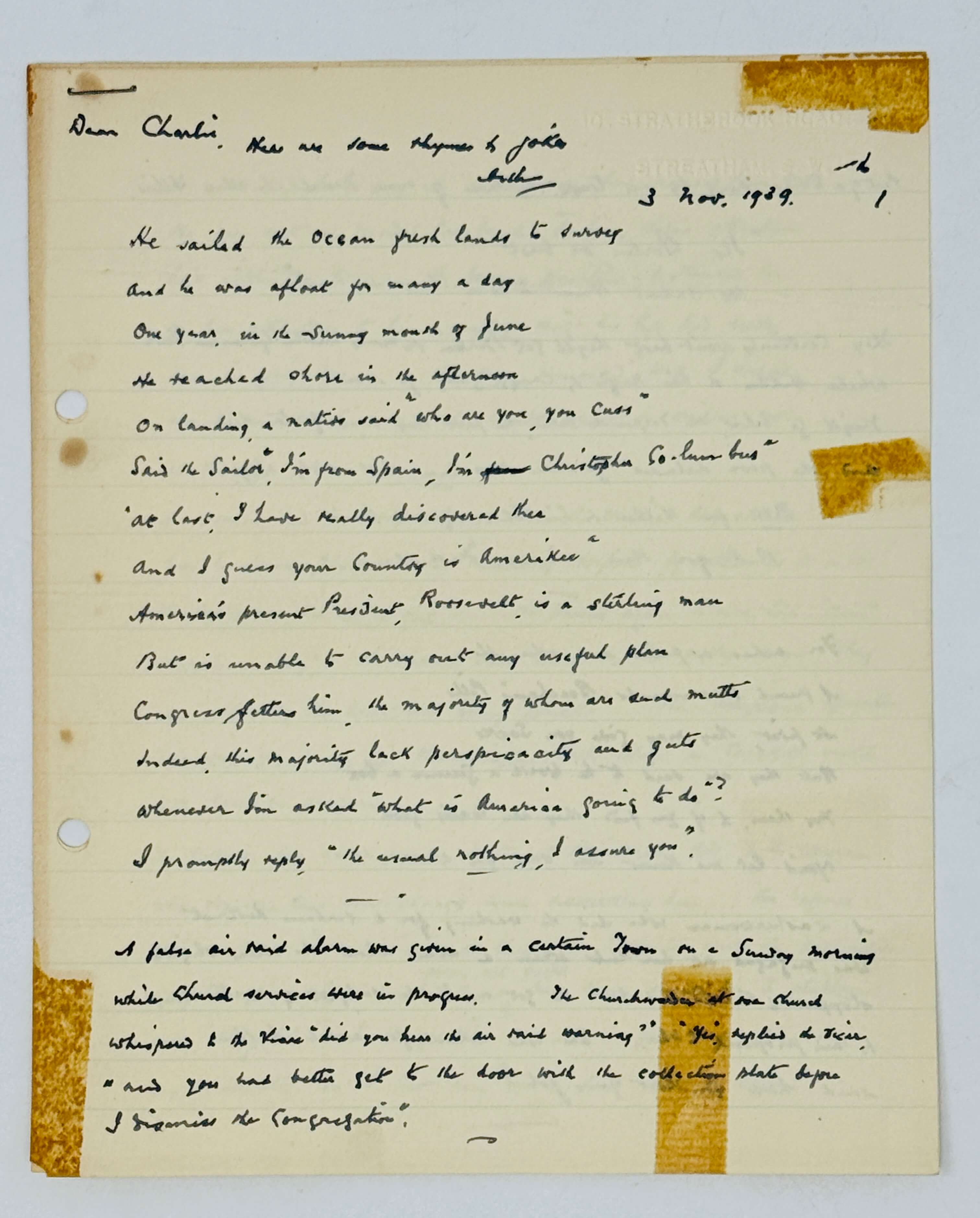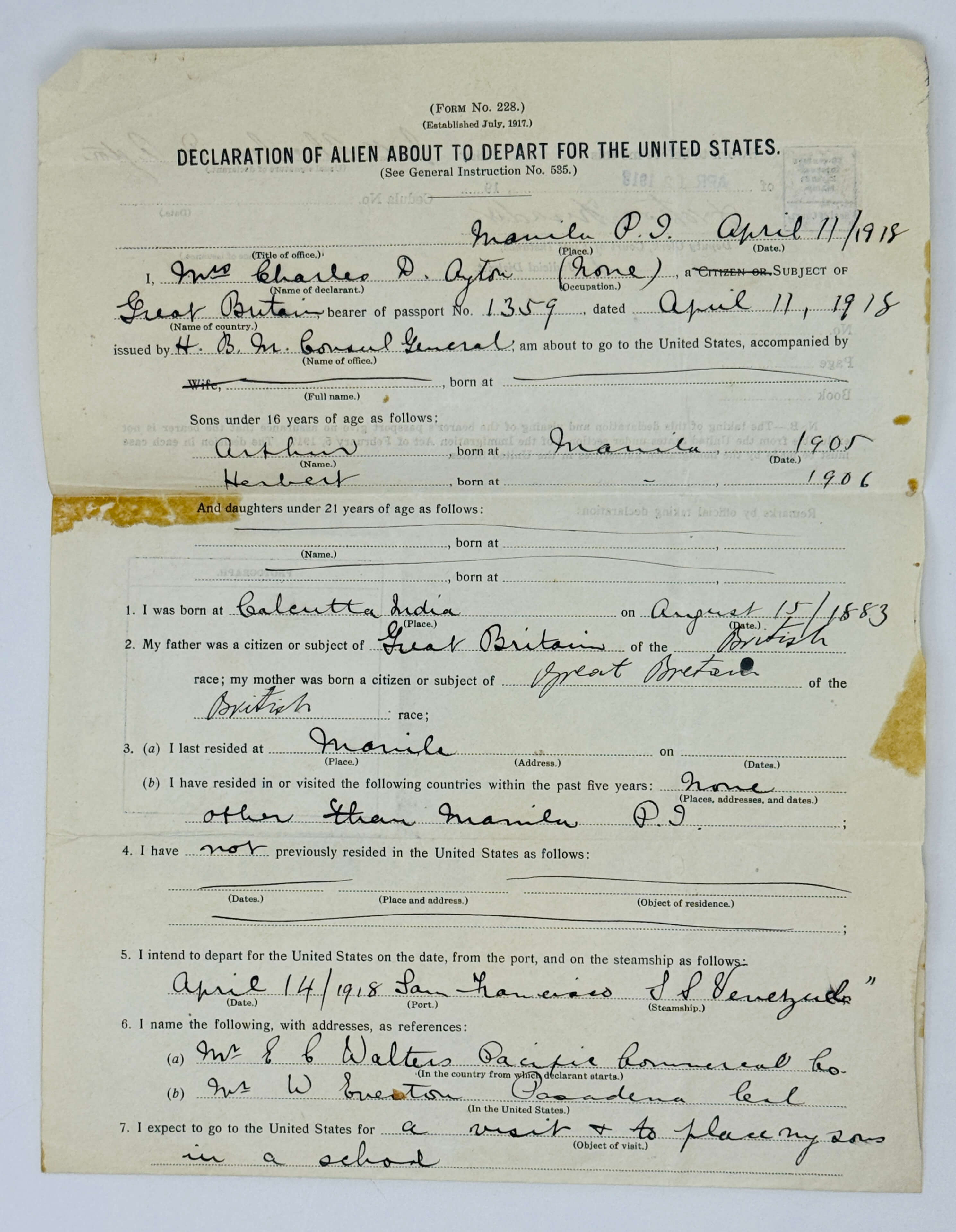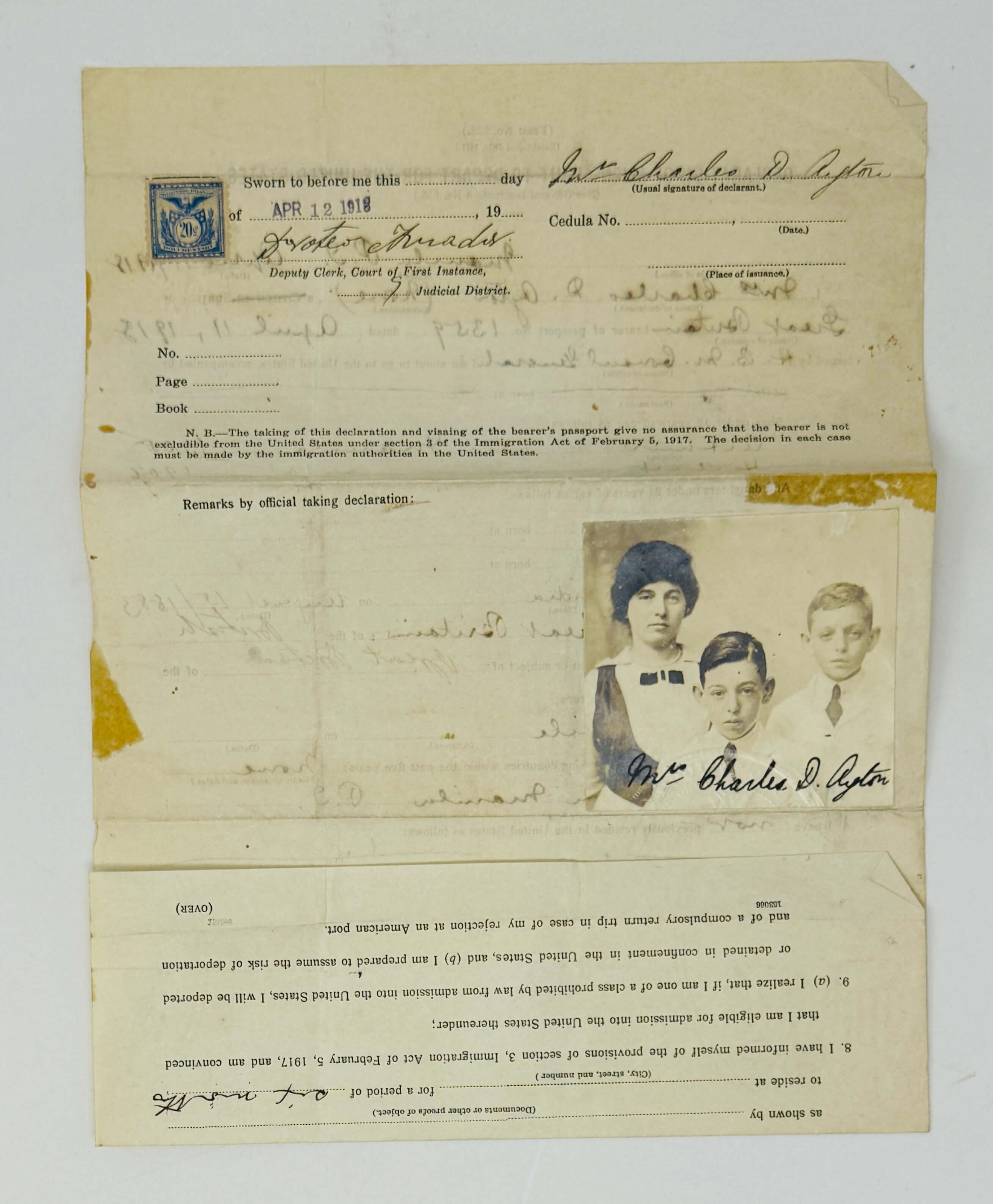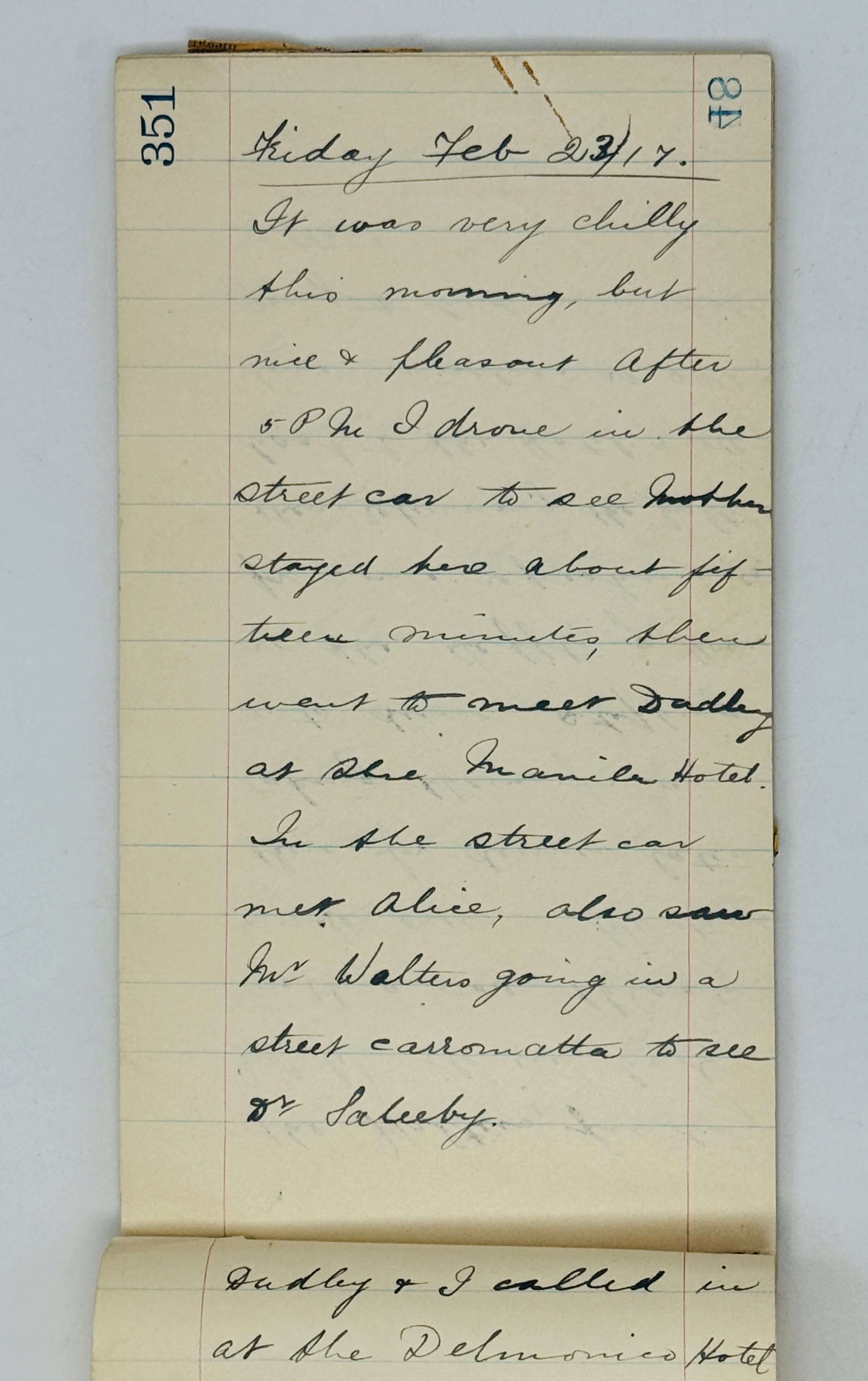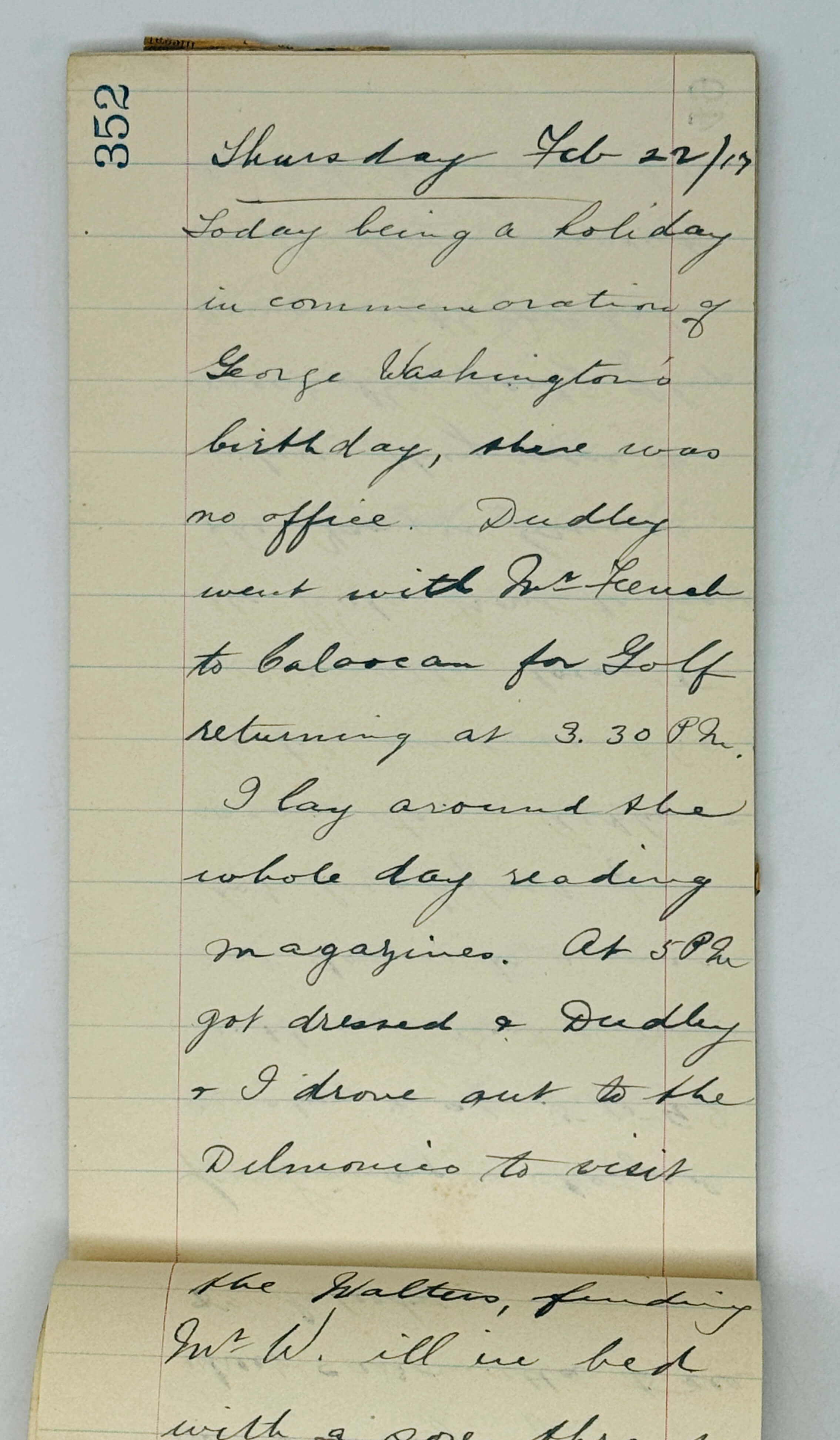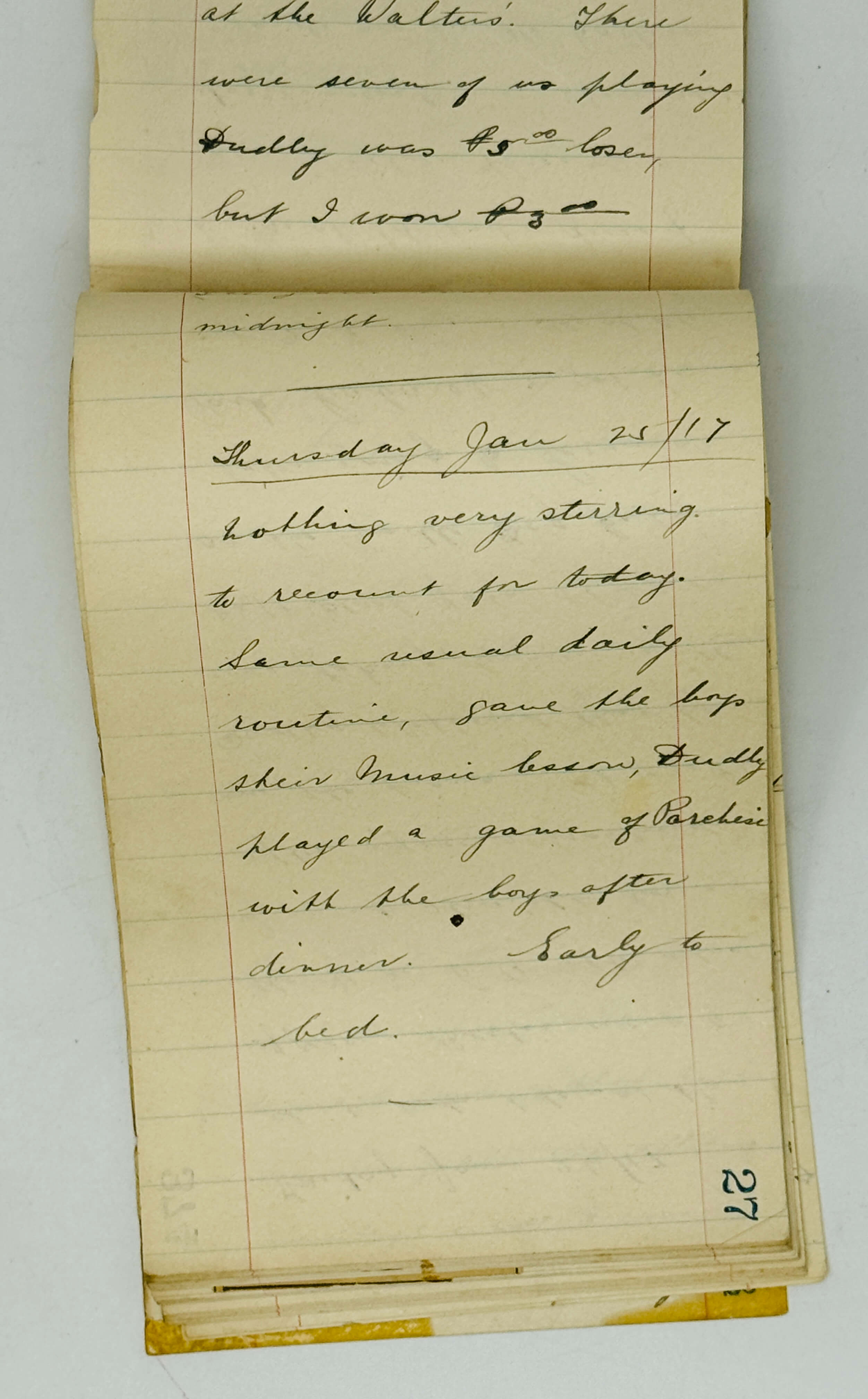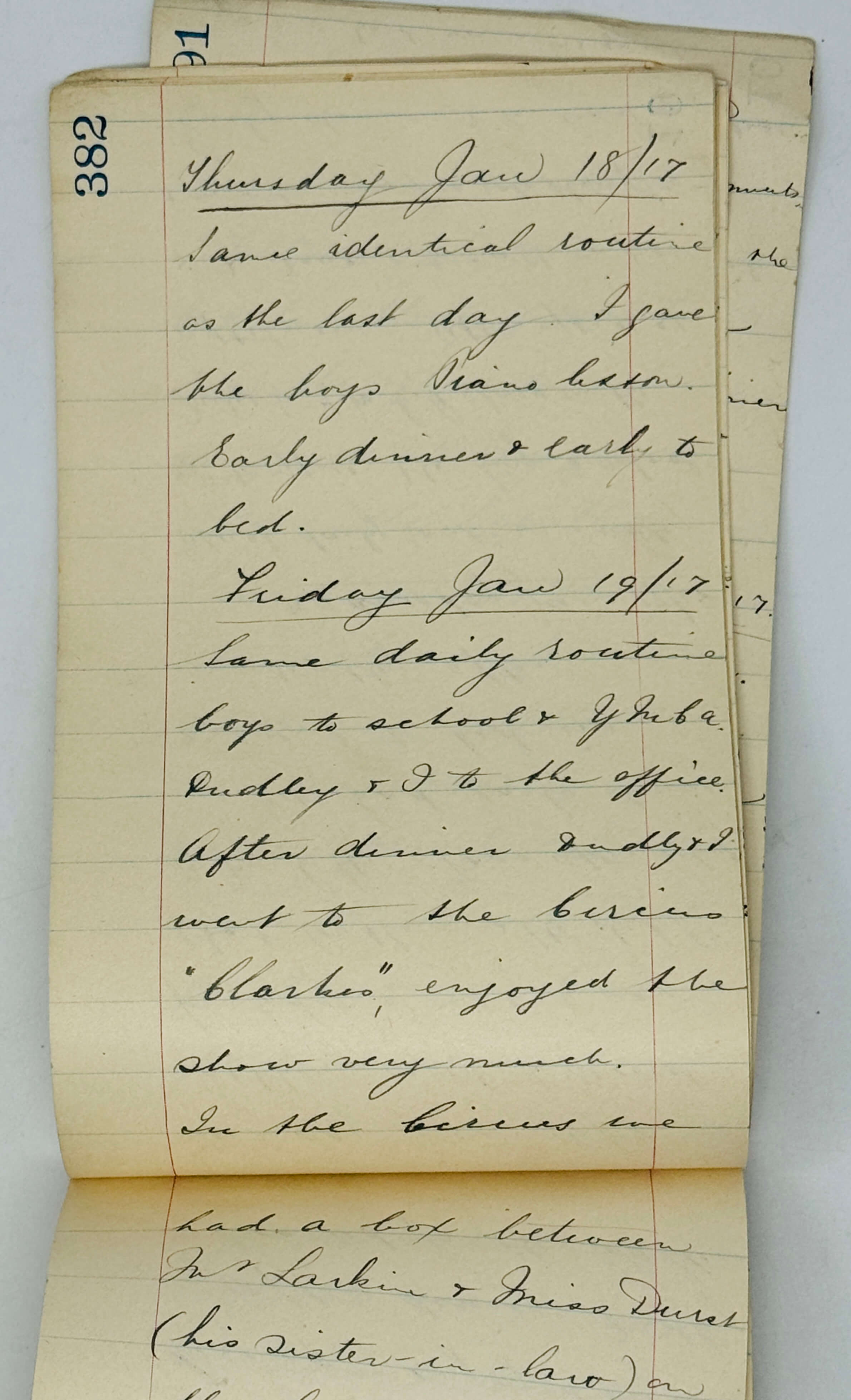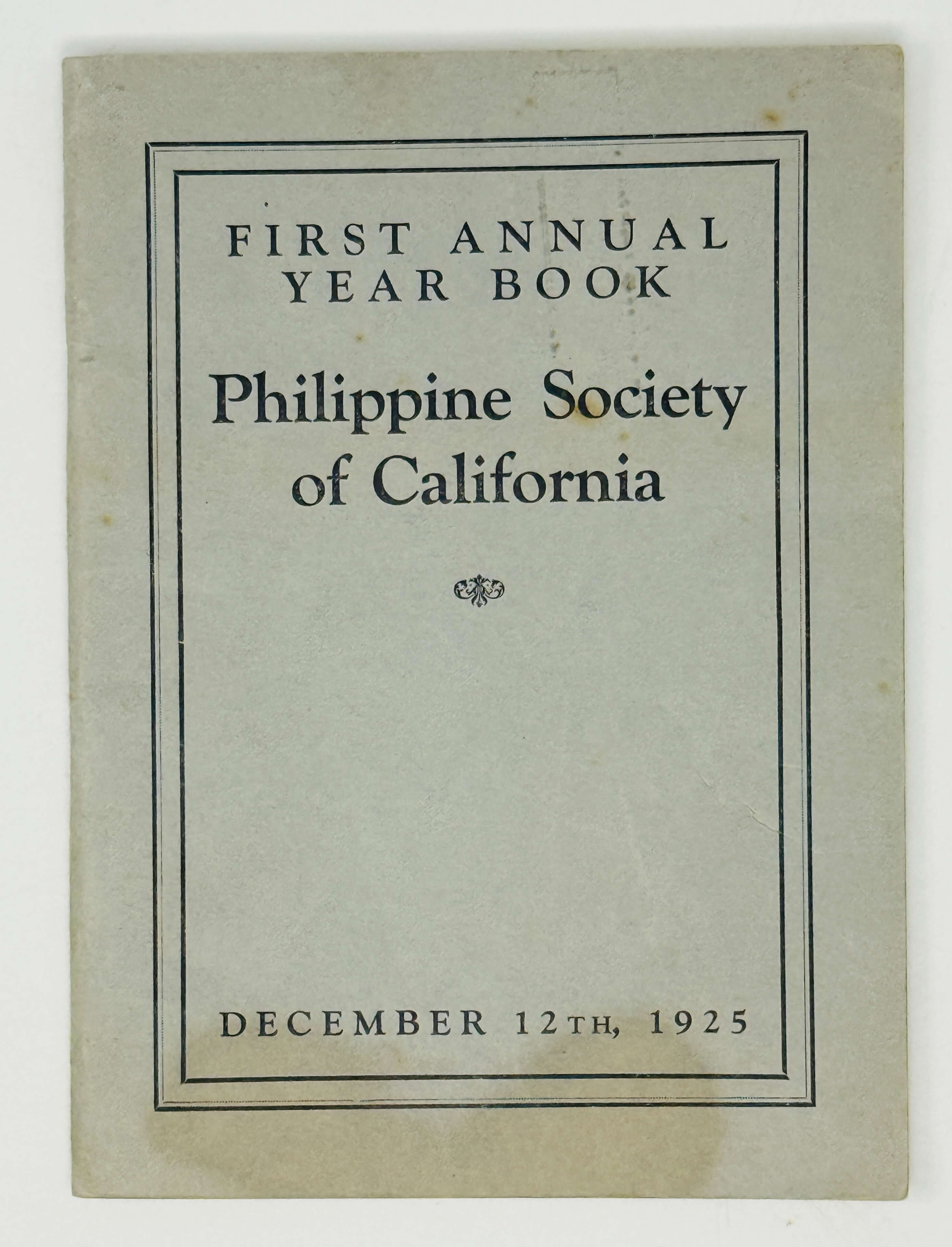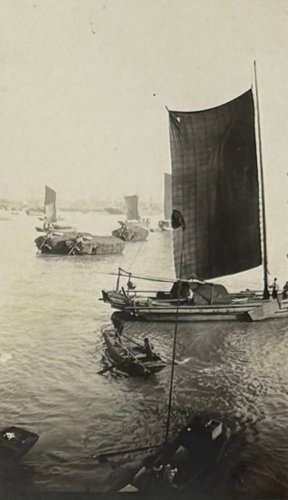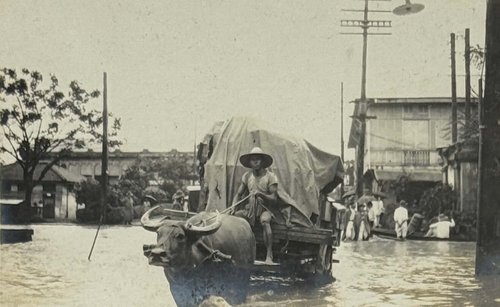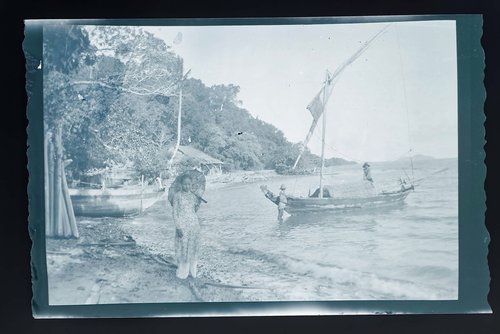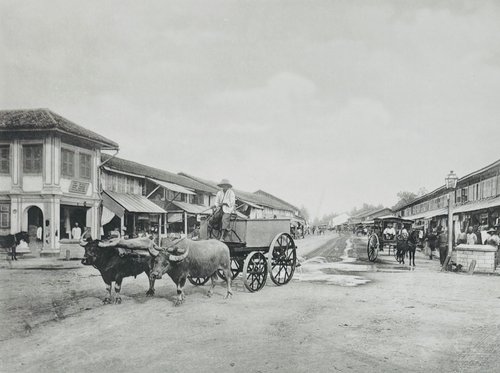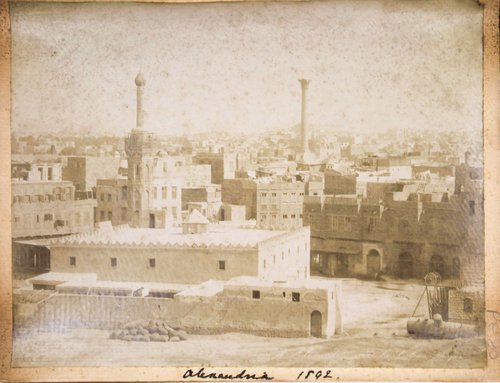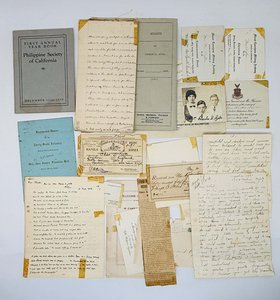
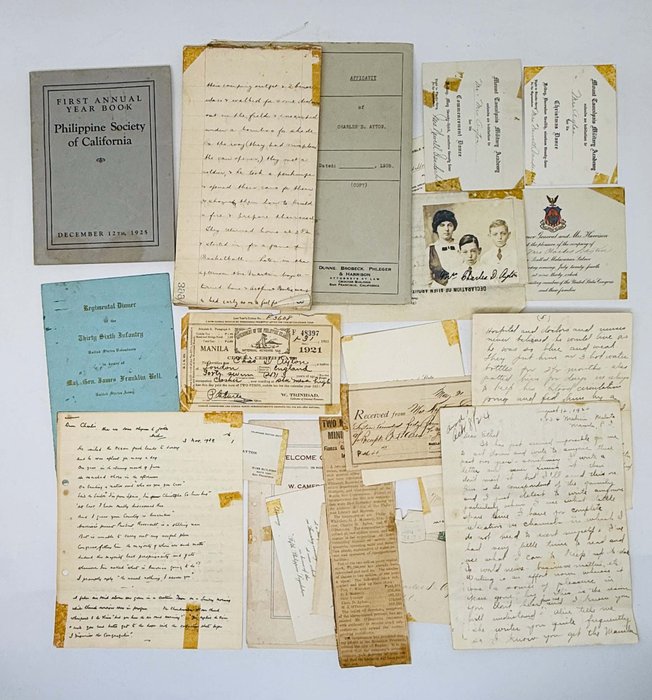
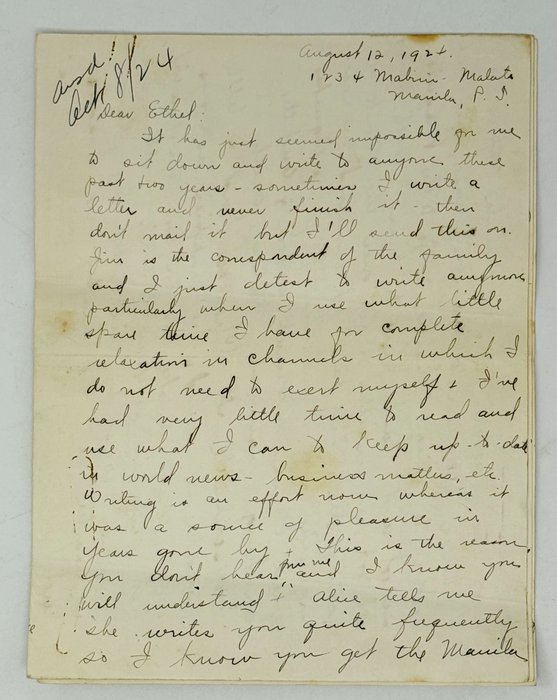

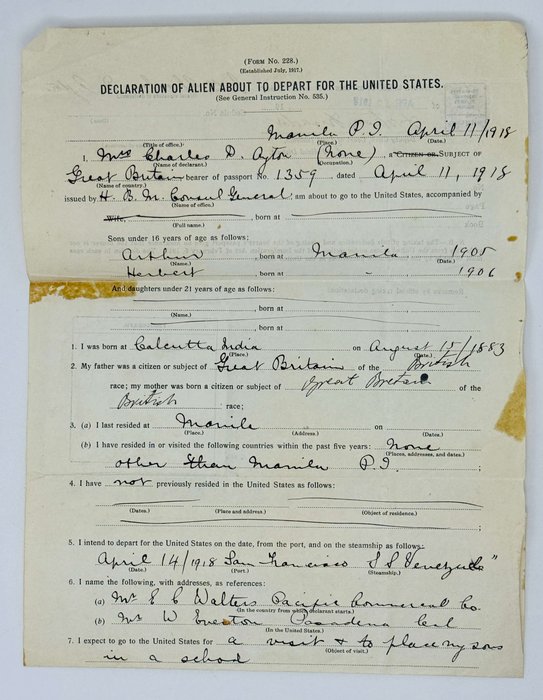

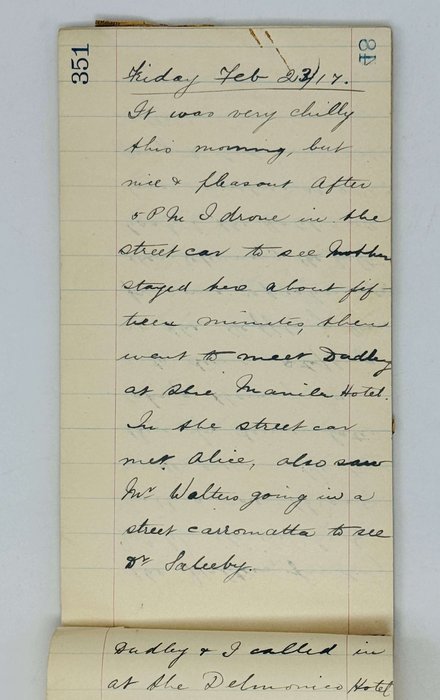
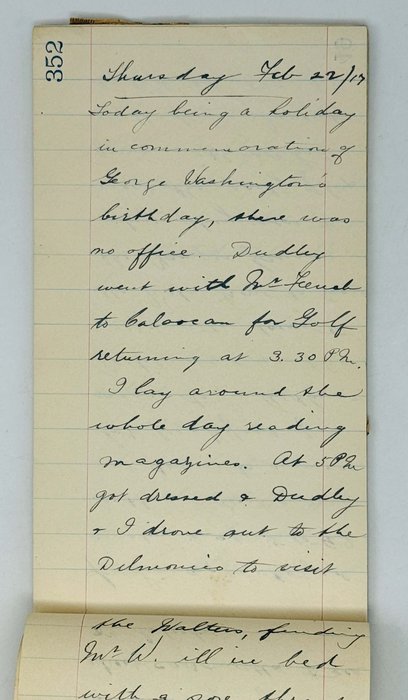
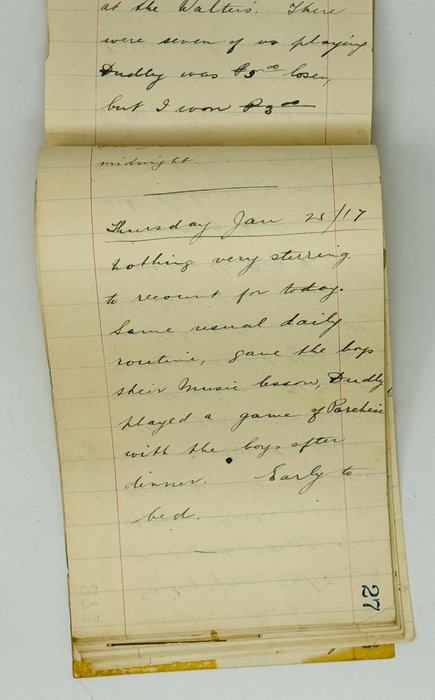
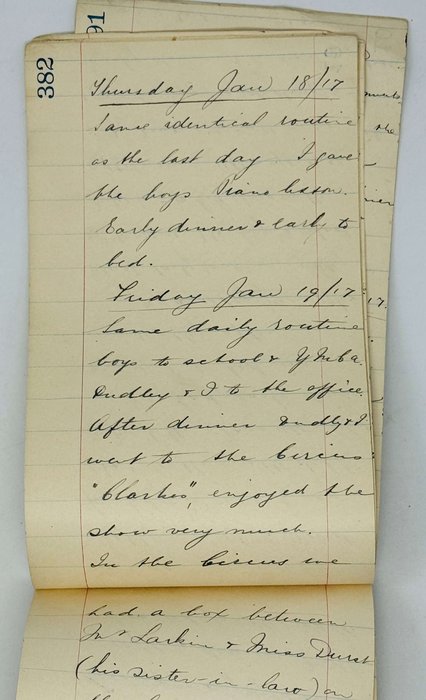
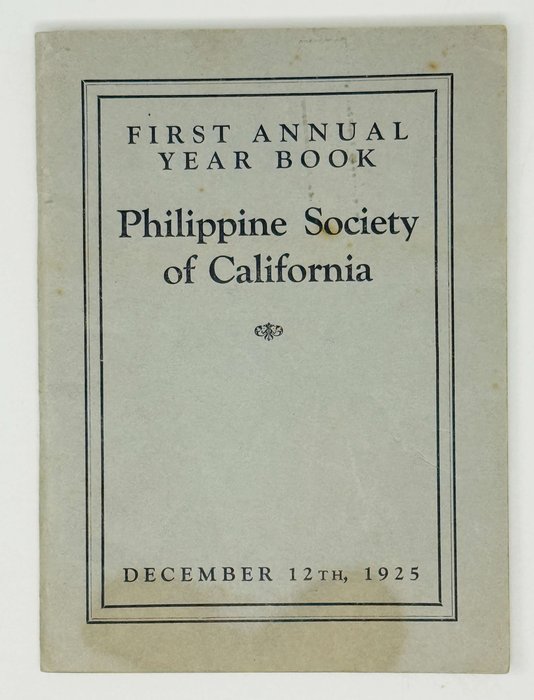
#MA66
Ca. 1911-1925, 1939, 1950
Ca. 45 original manuscripts, documents and printed ephemera. In all ca. 200 pp. of text. Several documents with paper slightly age-toned, occasional staining, fold marks, minor tears or occasional losses on extremities, but overall a very good collection.
Interesting extensive private archive of a Spanish-American War veteran and later long-time California resident, Charles D. Ayton and his wife Ethel, who lived and worked in Manila in ca. 1910s – 1921. “Ayton was born in Scotland 77 years ago. He was a Spanish-American War veteran of the First California Volunteers. He lived in Manila for several years after the Spanish war, working first with the Bureau of Audits and later as a manager of the Philippine Vegetable Oil Co. He came to San Francisco in 1921 and founding the accounting firm of Charles D. Ayton. He is said to have been the first person to move into the Russ building. He moved his home to Fifth Avenue in 1923 and has conducted his business there for the last six years” (The Richmond Banner. San Francisco, 26 May 1950; one of the clippings from the archive). According to another newspaper clipping from the collection, in ca. 1910s, Ayton became one of the incorporators of the “Fianza Gold Ltd.” – “a two-million peso mining corporation with general office in the city [Manila]” and “mining grants in the Mountain Province, around the city of Baguio.” In 1921, Ayton, “treasurer of the Philippine Vegetable Oil company, was charged with falsification of a commercial document involving $500,000 in a transaction with a British bank on a warehouse receipt covering cocoanut oil” (Graft charged to oil magnate: Treasurer of Philippine concern alleged to have misrepresented assets// Norfolk Ledger-Dispatch. Norfolk, VA, 5 March 1921, p. 17). The company was placed under independent management (Big Manila vegetable oil concern is placed in receiver’s hands// Honolulu Star-Advertiser, 13 March 1921, p. 1), and probably this was the reason for Ayton’s move to California the same year.
Ethel L. Ayton “was born in Calcutta where her father was an importer-exporter. She had lived many years in the Philippine Islands where she was a bookkeeper and accountant.” After her move to California, she lived there for 48 years (Obituaries: Ethel L. Ayton// Daily Independent Journal. San Rafael, CA. 1 July 1970, p. 4).
The archive generally refers to the Aytons’ life and work in Manila in the 1910s – early 1920s. The collection includes a 7-page affidavit of Charles D. Ayton regarding his work as treasurer of the “Philippine Vegetable Oil Co.” in 1918-1921 (in connection with the charges against him), tax and loan payment receipts, several official invitations to receptions by the U.S. Governor General of the Philippines and regimental dinner of the U.S. 36th Infantry Volunteers in Manila, collections of official letters regarding the employment of Ethel Ayton in various government organizations and private companies in Manila and Charles Ayton’s pension as a veteran of the Spanish-American War, “First Annual Year Book [of the] Philippine Society of California,” &c.
Very interesting is a detailed, over 90-page-long manuscript diary of Ethel Ayton, providing an insight into the life of her family from January 2 to February 23, 1917. The entries talk about Ethel’s office work, household chores and kid’s activities, but mostly describe various entertainments the Aytons engaged in: frequent dinners and drinks in the Delmonico Hotel, Manila Hotel, and “Lerma Park Cabaret at Caloocan,” visits to the “Cine Lux” cinema (watched “Charlie Chaplain Shanghaied” on Jan. 5), Manila Tennis Club (where they watched the matches between noted U.S. players George Church and Harold Throckmorton on Jan. 6 and 8), Manila Golf Club in Caloocan and gold course in Los Banos, Laguna, parties in the Mehan Gardens (Jan. 13), Elks Club (Jan. 21, one of the guests were “Dr. Fitzsimmons, the Treasurer of the P.I., and his wife”), “Grand Ball in honor of King Alfonso XIII” at “Casa Espana, the new Spanish Club” (Jan. 23, “brilliant gathering, near 3000 people attending the function”), “Columbia Club dance” and the “Ball at the Manila Hotel given in honor of Gov. Gen. F. Burton Harrison by the Legislature” (Jan. 30), Manila Carnival (February 3-17), &c.
On Jan. 10, the Aytons visited a well-known Manila merchant and public figure, William Walton Brown, known as a “Mayor” to the local expat community. “Above the stairway on the walls were arranged all kinds of spears, looted from China during the Boxer uprising. In the bedroom entrance on the door were arranged about 50 ladies’ shoes, a collection with a history to each which Mr. Brown knows. Over each doorway was affixed a human skull with electric light bulbs for eyes. Each of these skulls belonged to some Filipino insurrectto (some of those who buried the white men alive in the ground up to their necks during the insurrection in the Philippines). There was some electrical arrangement & by working which these eyes blinked.”
On Jan. 20, in Lerma Park, “there were many parties of Filipinos, most of them having come after the Arguelles (bride) and La’O wedding celebration was over” (Pacita Arguelles, a daughter of a known Filipino architect Thomas Arguelles, married Gabriel Arenas La Ó on Jan. 20, 1917).
Overall an interesting, content-rich archive, providing a look at the life of the expat community in Manila during the first decade of American rule in the Philippines.
The archive includes:
Charles D. Ayton’s documents:
1) [Collection of six printed invitations to the official receptions organized by the U.S. authorities in Manila]. 1911-1921. Two folding invitations and four printed card invitations (three with additional smaller cards, one with the original envelope). C.D. Ayton (often together with his wife) was invited to the “Regimental Dinner of the 36th Infantry U.S. Volunteers” (January 21, 1911), “Welcome Ceremonies in honor of W. Cameron Forbes, Governor General of the Philippine Islands” (January 17, 1913, Carnival Grounds), Governor General’s receptions at the Malacanan Palace (July 24, 1920 and December 15, 1921), events by the Council of State and the General Committee for the Inauguration of the new Governor General at the Marble Hall, Ayuntamiento (October 12 and 145, 1921).
2) [Two receipts given to Charles D. Ayton by the “Manila Building and Loan Association” (May 31, 1911 and the Government of the Philippine Islands (1921) on the payment of a loan and taxes). 7,5x14,5 cm (4 x 5 ¾ in) or slightly smaller. Printed receipts completed in hand.
3) [Newspaper Clipping:] Two Million in Mining Company: Fianza Gold Ld. Organized in Philippines. Ca. 1910s. Ca. 21x6 cm (8 ¼ x 2 ¼ in). Lists Charles D. Ayton as one of the incorporators.
4) [Statement from the Philippine Trust Company given to Charles D. Ayton on receiving the sum of P. 3,880,59 from him]. Manila, 3 January 1922. Ca. 28x21,5 cm (11 x 8 ¼ in). Typewritten document with the printed letterhead of the Philippine Trust Company, signed by the treasurer.
5) Affidavit of Charles D. Ayton, dated [April] 1925 (Copy). [Taken by] Dunne, Brobeck, Phleger & Harrison, Attorney at Law, Crocker Building, San Francisco, California. Ca. 33x21,5 cm (12 ½ x 8 ¼ in). Typewritten document. 7 leaves. With Ayton’s ink signature on the last leaf.
6) [Printed brochure]: Philippine Society of California: First Annual Year Book. December 12th, 1925. 48 pp. Ca. 17,5x12,5 cm (6 ¾ x 5 in). Lists Charles Ayton of “625 Market St., c/o Teller Ayton & Yoell, San Francisco” as one of “ex-residents of the Philippines” (p. 34).
7) [A manuscript poem written by Charles’s friend, about the resistance to Hitler during WW2]. November 3, 1939. Ca. 21x16,5 cm (6 ½ x 8 in). 4 pp. Black ink on lined paper.
8) [Collection of 9 official typewritten documents and letters regarding setting up the pension for Charles D. Ayton (and later for Ethel Ayton as his widow), as a veteran of the Spanish-American War]. 1950. From ca. 33x22 cm (13 x 8 ½ in) to ca. 17,5x20 cm (7x8 in). 9 pp. of text. Printed letterheads of “Veterans Administration” in San Francisco and Washington D.C. and “Mrs. Charles Dudley Ayton.” With three mounted newspaper clippings with Charles D. Ayton’s obituaries.
Ethel L. Ayton’s documents:
9) List of names to whom invitations were sent for Dudley’s & my wedding. [December 21, 1903]. Folio manuscript ca. 30x20 cm (11 ¾ x 8 in). 2 pp. Brown ink on wove paper.
10) [Collection of 18 official documents and letters (typewritten, printed forms completed in ink) regarding professional certification and employment of Ethel Ayton in Manila in 1909-1916]. Ca. 27,5x21 cm (11 x 8 ¼ in) or slightly smaller. 18 pp. of text. Printed letterheads of “Philippine Civil Service Board,” “Bureau of Civil Service,” “Export & Import Lumber Co.,” “Department of the Interior, Bureau of Science, Manila,” “Law Offices William A. Kincaid, Thomas L. Hartigan, Manila,” “Philippine National Bank,” “Manila Electric Railroad and Light Company,” &c.
11) [Manuscript diary of Ethel L. Ayton, with the entries from January 2 to February 23, 1917]. Ca. 12x22,5 cm (4 ¾ x 8 ¾ in). Ca. 98 pp. Black ink on lined paper. Lacking the first leaf with the beginning of the entry for January 1, 1917.
12) Declaration of Alien about to depart for the United States. Manila, P.I., 11 April 1918. Printed form filled in ink and signed by Ethel L. Ayton, certified and stamped on verso. With a group photo of Ethel L. Ayton and her two sons attached on verso.
13) [A private handwritten letter to Mrs. Ethel Ayton from her female friend with the latest news in Manila]. August 12, 1924, 1234 Malate, Manila, P.I. 12 pp. Ca. 20,5x15,5 cm (8x6 in).
14) [Two printed invitations from “Mount Tamalpais Military Academy” for its Commencement Dance (May 23, 1924) and Christmas Dance (December 12, 1924)]. Ca. 8,5x11,5 cm (3 ¼ x 4 ¼ in) or slightly smaller. Signed by “Mrs. Newell Vanderbilt.”

